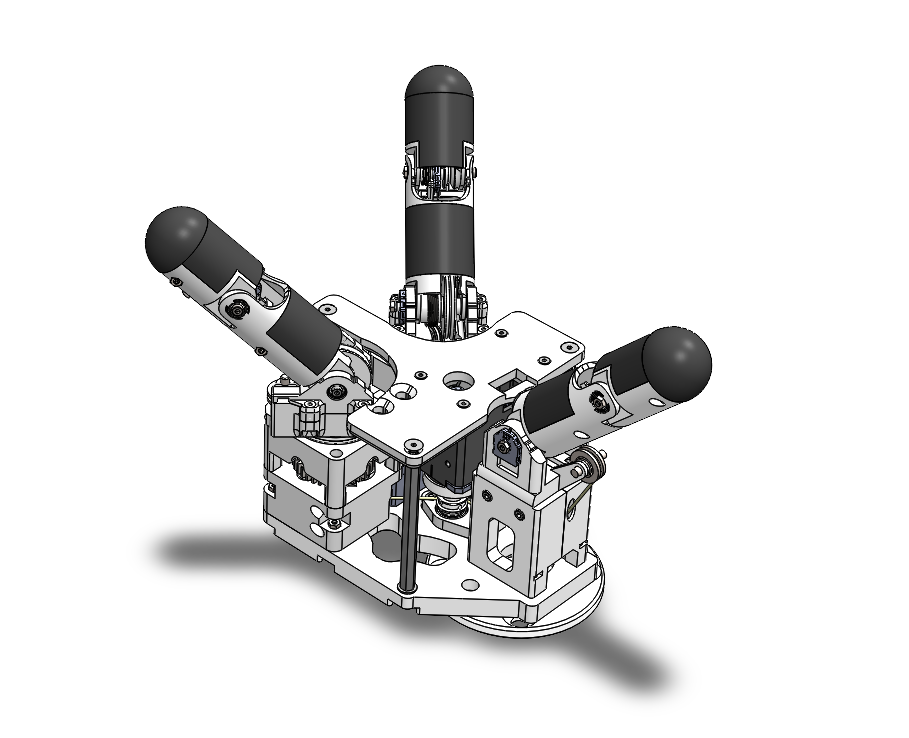
Project Overview
An underactuated robotic hand is a class of robotic hand design that has many more degrees of freedom than the number of actuators. The underactuated hand usually grasps objects with hand synergy, meaning that multiple fingers/joints open and close together. It typically offers more flexibility compared to a fully actuated hand due to its use of springs and cables in its force transmission mechanism.
This page provides an open-source design for a three-finger underactuated robotic hand to facilitate various research on robotic manipulation and compliance analysis. The design is low-cost and readily reproducible using off-the-shelf components and 3D printing. Software is provided so that researchers can easily control the robotic hand, as well as get real-time sensory feedback.
Publications
- Zhao, Q., Roy, R., Spurlock C., Lister K., and Wang, L. (2024). A High-Fidelity Simulation Framework for Grasping Stability Analysis in Human Casualty Manipulation, under review.
- Joyce, E., Zhao, Q., Burgdorfer, N., Wang, L., and Mordohai, P. (2024). Is Image-based Object Pose Estimation Ready to Support Grasping?, under review.
Design

Files last updated on 10/29/2021.
Description:
- This is a three-finger, cable-driven, underactuated robotic hand.
- Two actuators (Dynamixel XL330 and XL430) control 8 DOFs in total (2 joints on each finger, and 2 additional rolling joints for adduction/abduction motion).
- Fishing wire is used as the tendon.
- Addition to screws and nuts, some bearings and gears are required. Please refer to the SolidWorks model for details.
- Potentiometers are required for getting real-time joint angle feedback.
Team

Qianwen Zhao
PhD Student

Nick Matranga
Undergraduate Student

Byron Panrudkevich
Undergraduate Student